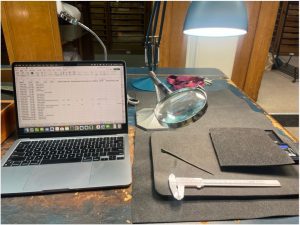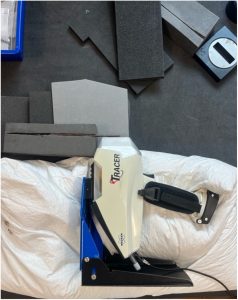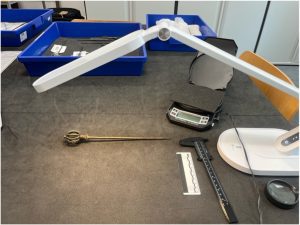May 2025 | BIPS Travel Grant
Travel to Ashmolean Museum for pXRF analysis of pins for dissertation research
Summary of topic:
This research studied pins from burial contexts in Iron Age northwestern Iran and examined properties including composition, style, and burial context to analyse how the living might have used them in functional, aesthetic, and symbolic ways. Although there is abundant material culture and distinct metalwork from this region and period, the metallographic analysis is still lacking. Once completed, this analysis provided insight into the lives of the people, mainly women, who wore the pins. This research created a dataset of pins from burials at 20 sites and three unprovenanced collections from four main regions in northwestern Iran: Luristan, Azerbaijan, Kurdistan, and Gilan. The dataset includes information from published excavation reports as well as in-person analysis done on pins at the British and Ashmolean Museums, which was then analysed by creating a pin head typology, GIS maps, charts, and 3D models.
Report:
This research generated significant amounts of data and isolated trends regarding pin composition, pin context, and the wearer’s gender. It found a connection between pins, the ritual and divine, and femininity, indicating that pins were important ritual objects intrinsically connected to women. Many anthropomorphic images represent women in various different functions, often connected to fertility, and the vast majority of the pins found with sexed individuals were with females. The anthropomorphic head type was only found in context as votive offerings at a sanctuary dedicated to a female deity, some of which were studied at the museums. Women likely wore these pins, dedicated them, and/or were represented in them in ritual capacities.
Additionally, the variety and correlations among the lengths, design intricacies, and composition suggest a division among the types of pins. It could be that these longer, more intricate, and more tin-high pins were made for and worn by upper class women, who used these distinct pins to show off their wealth, social influence, or other distinctions. This shows agency and action among the women of the time, who sought out and chose certain ornaments to send a message to their society. The motifs on the pins are also common on other bronze items from the time, so choosing certain designs could send a message of connection to another institution, ideal, or activity. The desire for these many different types of pins would have fed the economy and stimulated creativity among the metalworkers, making women important agents in economy and development. As a whole, this research contributes much data on pins as artefacts and as windows into the lives of ancient people.
I used a variety of methods, discusses above, to address my research questions, and the primary output was my master’s dissertation at Durham University. Now that this dissertation has been completed and submitted, I am looking into other places to submit my research for publication. Since the principal research output was a dissertation, it will need to be edited for concision and format, but I am interested in submitting it to the IRAN journal as well as other journals. My research was not completed from any new archaeological excavations, but compiles data from many past excavations and performs new analysis on the pins themselves. It deals with personhood and gender, as well as materials analysis, which I believe makes it a good candidate for IRAN and other publishing bodies.
Ellie Martin is a PhD student at Durham University.


